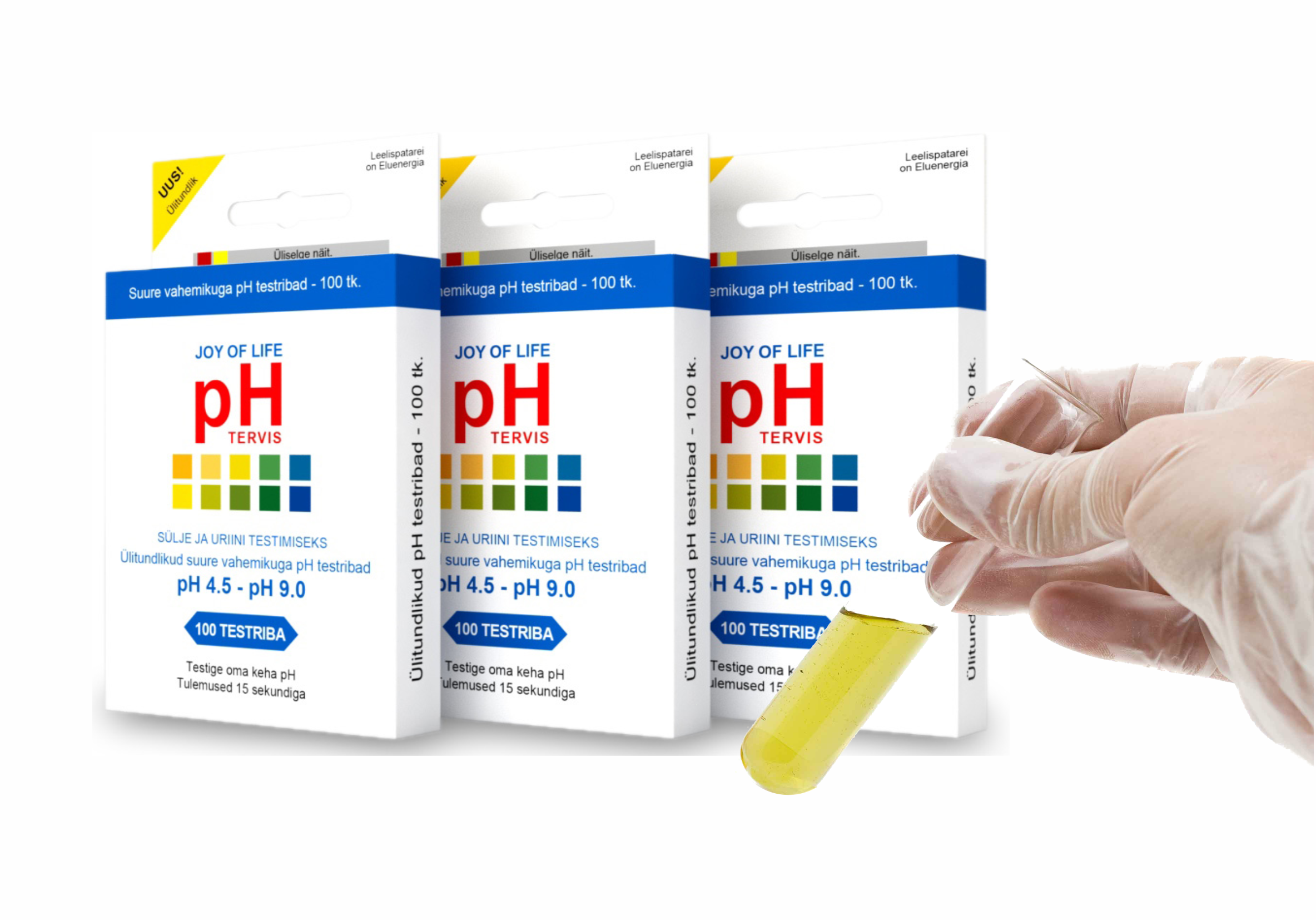
The ratio of acid and alkali in any solution is called acid-base balance. The acid-base balance is characterized by a special pH indicator (power Hidrogen), which shows the number of hydrogen atoms in a given solution. The human body has a certain acid-base ratio, characterized by the pH (hydrogen) index. The pH value depends on the ratio between positively charged ions (forming an acidic medium) and negatively charged ions (forming an alkaline medium).
The body constantly strives to balance this ratio, maintaining a strictly defined pH level.
When the balance is imbalanced, many serious illnesses can occur.
At a pH of 7.0, one speaks of a neutral medium. The lower the pH level, the more acidic the environment (from 6.9 to 0). An alkaline medium has a high pH level (from 7.1 to 14.0).
Acidic environment - рН on 0 kuni 6,9.
Alkaline environment - рН on 7,1 kuni 14,0.
The human body is 70% water, so water is one of the most important parts of it.
Check your acid-base balance with pH test strips.
Indicator litmus paper provides a quick and economical way to measure the Ph level of any liquid (drinking water, drinks), including body fluids (saliva, urine, semen, vaginal acidity, etc.).
Litmus paper is used not only in chemical laboratories, it is necessary in every family.
Litmus is a coloring matter obtained from certain types of lichen. It contains substances that have the ability to change their color in the presence of acids and alkalis. These substances are called indicators and are used to determine the reaction medium. The environment can be neutral, acidic and alkaline.
It is very important to pay attention in time to changes in the pH level of the internal environment of the body and, if necessary, take urgent measures. With the help of pH test strips, you can easily, quickly and accurately determine the pH level without leaving your home.
If your urine pH is in the range of 6.0 - 6.4 in the morning and 6.4 - 7.0 in the evening, then your body is functioning normally. If the pH level in saliva stays between 6.4 - 6.8 throughout the day, this also indicates the health of your body. The most optimal pH level of saliva and urine is slightly acidic, in the range of 6.4 - 6.5.
The best time to measure the pH level is 1 hour before meals or 2 hours after meals. Check the pH level 2 times a week 2-3 times a day. Not knowing your pH level can lead to dire consequences.
Increased acidity in the body.
An imbalance in the pH of the body in most people manifests itself in the form of increased acidity (the state of acidosis).
In this state, the body poorly absorbs minerals such as calcium, sodium, potassium and magnesium, which, due to excess acidity, are excreted from the body. Vital organs suffer from a lack of minerals. Acidosis not detected in time can harm the body imperceptibly, but constantly for several months and even years.
Alcohol abuse often leads to acidosis. Acidosis can occur as a complication of diabetes.
With acidosis, the following problems may appear:
- Diseases of the cardiovascular system, including persistent vasospasm and a decrease in the concentration of oxygen in the blood.
- Weight gain and diabetes.
- Diseases of the kidneys and bladder, the formation of stones.
- Decreased immunity.
- An increase in the harmful effects of free radicals that can contribute to oncogenesis.
- Fragility of bones up to a fracture of the femoral neck, as well as other disorders of the musculoskeletal system, such as the formation of osteophytes (spurs).
- The appearance of joint pain and pain in the muscles associated with the accumulation of lactic acid.
- General weakness.
Increased content of alkali in the body.
With an increased content of alkali in the body, and this condition is called Alkalosis, as well as with acidosis, the absorption of minerals is impaired. Food is absorbed much more slowly, which allows toxins to pass from the gastrointestinal tract into the bloodstream.
An increased alkali content in the body is dangerous and difficult to correct. It is usually the result of the use of drugs containing alkali.
An increased alkali content can provoke:
- Skin and liver problems.
- Strong and bad breath and body odor.
- Activation of the vital activity of parasites.
- Various allergic manifestations, including those associated with food and environmental pollution.
- xacerbation of chronic diseases.
- Constipation and other bowel problems.
Urine pH value.
Urine pH test results show how well the body absorbs minerals such as calcium, sodium, potassium and magnesium. These minerals are called "acid dampeners" because they regulate the level of acidity in the body. If the acidity is too high, the body will not produce acid. It has to neutralize the acid. For this, the body begins to borrow minerals from various organs, bones, etc. in order to neutralize excess acid, which begins to accumulate in the tissues.
Thus, the acidity level is regulated.
The pH value of saliva.
It is also rational to know the pH level of saliva. The test results show the activity of enzymes in the digestive tract, especially the liver and stomach. This indicator gives an idea of the work of both the whole organism as a whole and its individual systems. Some people may have increased acidity of both urine and saliva - in which case we are dealing with "double acidity".
It is in your health to maintain the correct pH balance.
Even the “most correct” treatment program will not work effectively if your pH balance is imbalanced.
